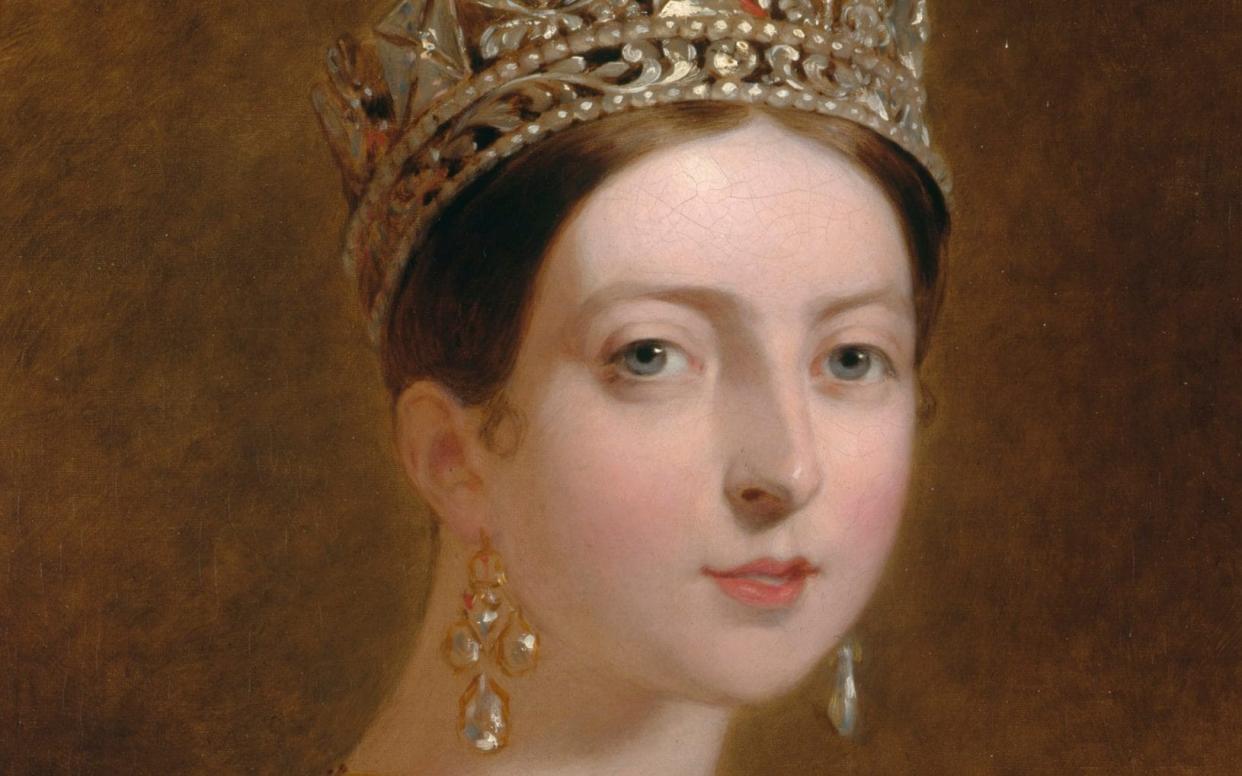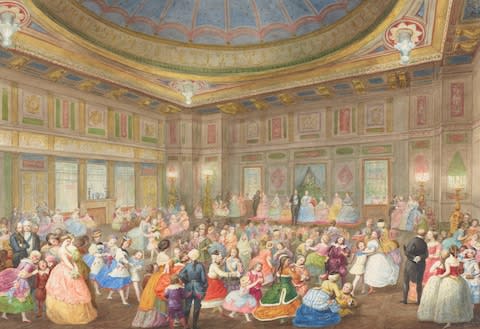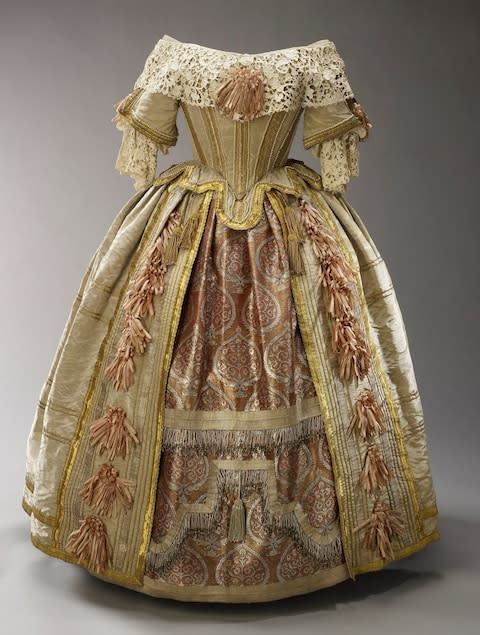Queen Victoria's Palace review, Buckingham Palace: grand designs from the Queen of the Industrial Age

Next time Prince Harry visits granny at Buckingham Palace, he must drop in on this highly entertaining exhibition about Queen Victoria.
As he enters the exhibition, he’ll see a huge painting by Sir George Hayter of the Christening of the Prince of Wales, Victoria’s eldest son, at St George’s Chapel, Windsor, in 1842. All the godparents are there for the world to see – not something you can say about Archie Mountbatten-Windsor’s, whose identities were concealed earlier this month.
But then Queen Victoria was a master of PR. This new exhibition cleverly shows how she presented a new face of monarchy to the world – and how she remodelled Buckingham Palace in her own image.
George III bought what was then Buckingham House in 1761. But Victoria was the first monarch to live there properly – and the first to make it the monarchy’s headquarters. She moved in in 1837, three weeks into her reign, and promptly turned what had been a charming Queen Anne house into a mammoth royal palace.
Prince Albert – a highly artistic figure; his engraving tools are in the show – commissioned Edward Blore to remodel the palace’s huge façade (later refaced by Aston Webb). And – another PR coup – Albert cooked up the Buckingham Palace balcony, now such an integral feature of great royal occasions.

Victoria added on a thwacking great ballroom. The plans, on show here, by architect Sir James Pennethorne, were often marked with the words “Approved Albert”, showing how crucial the prince was to the palace look.
The royal couple brought an odd mixture of ancient and modern. Victoria introduced phones, electricity, voice recordings and telegrams to the building. But at the same time, she and Albert loved recreating a fantasy medieval life. An 1842 Landseer painting shows them kitted out as the 14th-century Edward III and Queen Philippa.
How they adored dressing up. Her exquisite grey silk and gold lace costume – for the 1851 Stuart Ball at the palace – is staggeringly small. Not just in height but in girth; at 32, the five-foot-tall queen was still a slip of a thing, yet to enter her, ahem, expansive middle age.

The puddings made by her chief cook, Charles Elmé Francatelli, had something to do with the transformation and modern models of his great, quivering, sugary concoctions are here in the palace dining room.
Victoria was a talented artist herself. In her charming 1838 sketch of her own coronation that year, she again looks like a medieval princess straight from the Knights of the Round Table, not the new Queen of the Modern Industrial Age.
You might also call her the Queen of the Hoarders. She kept everything. Here, rather spookily, is the gold casket neatly filled with blue velvet bags containing her children’s baby teeth, each sewn with their names in gold thread.
Victoria also kept everything in immaculate nick. That’s why snooty sophisticates turn their nose up at Buckingham Palace: it’s all too new. Why not just rejoice in the extraordinary survival of a royal palace in pristine condition?
Of course, all the palace-building and fancy-dress balls came to a tragic, lurching end in 1861, with the death of Albert, at only 42. The hoarding and the memorialising continued, but this time with a black edge – literally. She marked the page of the book (Walter Scott’s 1823 Peveril of the Peak) she was reading to Albert on his deathbed with a black-framed blank piece of paper. And her Balmoral writing paper – topped with a pretty picture of a stag and a hind – was henceforth also edged in black.
Victoria left the palace in 1862 to become the Widow of Windsor. For nearly 40 years, the building was frozen in time. And so it remains today, unusually unchanged: when it comes to fixtures and fittings, our Queen is no moderniser, thank God.
How astonishing to think that, only 25 years after Victoria’s death, our own Queen was born. Since 1837, when Victoria came to the throne, she and Elizabeth II have ruled the country for 131 of the last 182 years. This show illustrates beautifully how the modern British age is essentially the Victorian-Elizabethan age.
'Queen Victoria’s Palace' is part of the Summer Opening of the State Rooms, Buckingham Palace, Jul 20 – Sept 29 rct.uk

